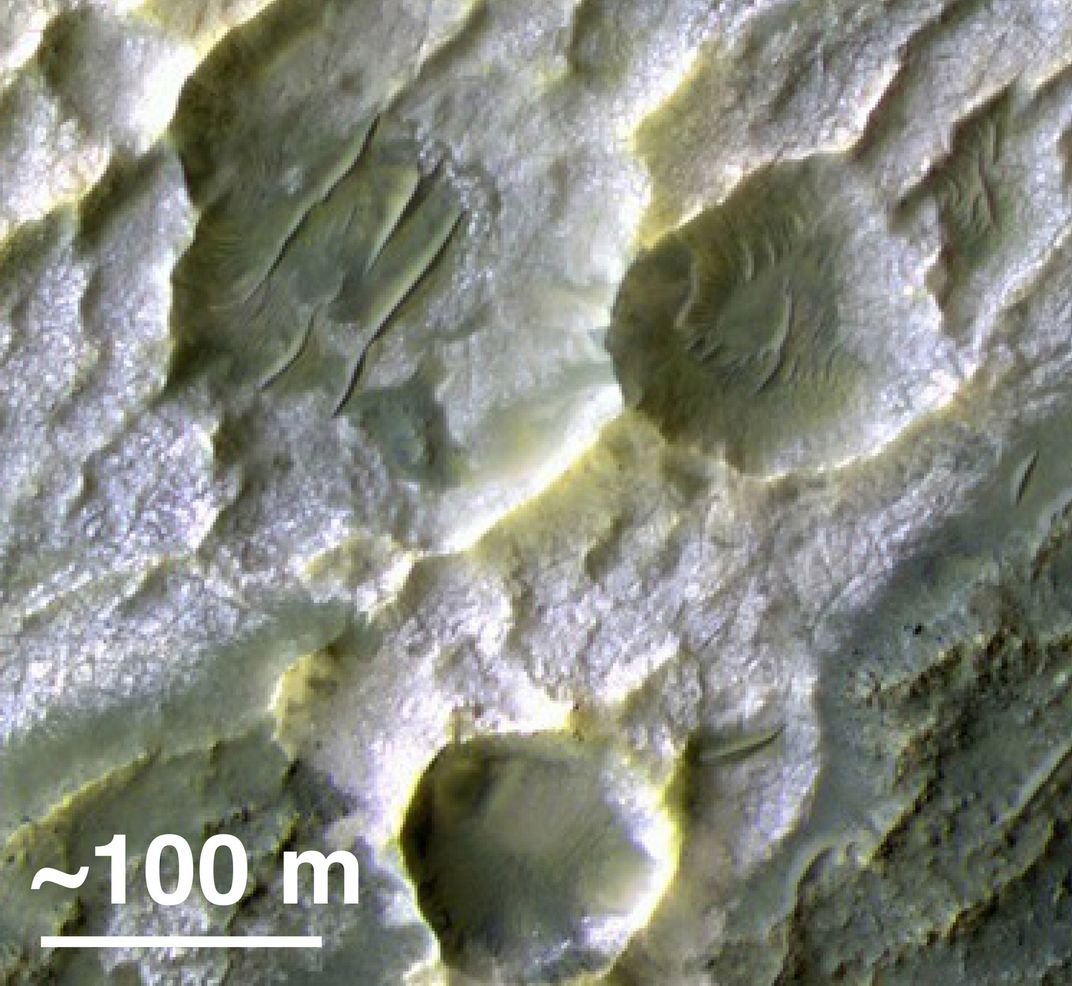Martian Life May Survive on Water From the Atmosphere
And “follow the water” could be a misguided strategy.
/https://tf-cmsv2-smithsonianmag-media.s3.amazonaws.com/filer/fa/73/fa733035-5d2d-4e29-a74f-86b5ff87b147/hypolith.jpg)
In a new paper published in the journal Astrobiology, Alfonso Davila from NASA’s Ames Research Center and I speculate about where the last outposts of Martian life could be, based on our exploration of the dry limits of life on Earth.
We suggest that NASA’s old paradigm of searching for water as a way to find life on Mars is wrong. Any life still existing on Mars would be land-based, since standing bodies of water have long since dried up. But how do you survive without liquid water on the surface?
Microbes could use the hygroscopic properties of salts that trigger the condensation of liquid water directly from the atmosphere. You can see a similar effect on Earth if you expose salt to air. It draws water from the atmosphere and the salt gets clumpy. In a very dry desert this effect can be even more pronounced, with the salt absorbing so much moisture that it dissolves and forms a solution (scientists call this effect deliquescence). When we go to the driest areas of our planet, like the core of the Atacama Desert, we find microorganisms that obtain their life-sustaining water that way.
There are multiple lines of evidence that microorganisms on Earth existed on land much earlier than previously thought, perhaps as early as three billion years ago. Compared to microbes, plants conquered the land pretty recently, just a bit over 400 million years ago. What we see in Earth’s deserts is a specific sequence of habitats with decreasing water availability, ranging from inhabited soil crusts to hypoliths, microorganisms that live within or underneath rocks.
In the core area of the Atacama, where it is even dryer, with rainfall only a few times in a decade or so, no hypoliths are able to survive. But microbes in salt rocks do.
If these evolutionary adaptations to dryness occurred on an ocean planet like Earth, it should have occurred on a land planet like Mars as well. How do the driest conditions of our planet compare to Mars?
Today Mars is two to fifty times dryer than the core region of the Atacama Desert, so it is still a stretch to think that our salt-loving microbes could hang in there (assuming they haven’t evolved better tools to survive on a dry and cold planet). However, once in a long while (perhaps every few hundred thousand or million years) the Martian axis tips over, having no stabilizing Moon such as our own, and water on the Red Planet gets redistributed. During these events water availability on Mars is very similar to that in the driest regions of Earth, which means that life on Mars could have hung in there much longer than we previously thought. It may even still be around near the surface.
If so, where should we look? We suggest a location where no lander or rover has looked before: the southern highlands of Mars, where there are plenty of chloride salt deposits.

/https://tf-cmsv2-smithsonianmag-media.s3.amazonaws.com/accounts/headshot/Dirk-Schulze-Makuch-headshot.jpg)
/https://tf-cmsv2-smithsonianmag-media.s3.amazonaws.com/accounts/headshot/Dirk-Schulze-Makuch-headshot.jpg)